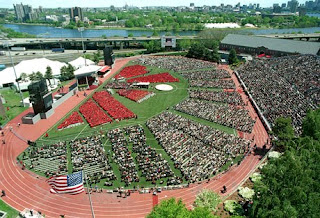Propane For Grilling and Heat
 Propane Tank Safety:
Propane Tank Safety:In the “old days” propane tanks were just metal cylinders with a screw valve on them. There was also a safety valve (pressure relief valve) that allowed propane to escape when it expanded, as it got hotter outside.
Those days are gone. Now propane tanks have a safety pressure valve inside the valve you hand turn. This interior valve will not allow you to let propane out of the tank unless it is connected to the correct fitting (which is usually your gas grill). When you screw the fitting onto the tank it pushes in on the interior valve and allows gas to enter the supply hose. Gone are the days when you just turned the hand valve to see if there was gas in the tank (with no hose attached).
The second safety valve installed on these tanks is called an OPD (Overfill Protection Device). They do not allow the person refilling the propane tank to overfill it (which is bad – the explosive kind of bad). This is basically a float inside of the tank that rises as the compressed liquid propane fills the tank and gradually shuts a valve so no more propane can enter the tank.
Of course, the pressure relief valve is still there – when it gets hot enough outside and the tank temperature goes up, don’t be alarmed when this valve releases some gas (unless it is near an open flame). You will hear a hissing noise and maybe see some vapor, but that should be it - if the tank was stored properly. Since propane gas is heavier than air, the vapor will sink and disperse (this is a good reason not to store propane where leaking gas can accumulate in a low area).
What Do You Do With An Old Tank?

If you have an old tank without the devices above it is illegal to have them refilled. Also, there is a date of manufacture stamped on the safety ring of the tank. If the tank is 12 years old or older, you won’t be able to get it filled. This is the Propane Industry’s standard life for a propane tank. An old propane tank can be recycled at your local supplier or converted to an air tank with kits they sell online.
Additional Propane Information:
Tanks are filled to only about 80% with liquid propane. The 20% of space left in the tank is needed for the liquid propane to vaporize into a gas that then travels through the supply line. The liquid is never supposed to touch the valve – if it does, the valve will freeze, stopping the flow. This is why you are never supposed to lay a tank on its side.
Depending on the demand (rated in BTUs) put on the tank by the by the grill or heater attached to it – and the temperature around the tank – it is possible that you will not be able to vaporize all the liquid propane in the tank (unless you have an electric Powerblanket 100lb Gas Cylinder Insulated Tank Warming Blanket
The way around this is to connect additional tanks to the supply hose. This is accomplished through the use of "daisy chain" connectors or manifolds which allow many tanks to feed a single source. By using more tanks, you increase the surface area, and vaporize more liquid propane. This would satisfy the demand of the propane device.
If you were running an 80,000 BTU Heater, and it was 40-60 degrees out, you would need one 100-pound tank to supply it for several hours. If it were 20-30 degrees out you would require two tanks coupled together. If it were much colder than that you could need three or more (or move to a larger 350 pound propane tank).
I have had issues with my gas grill in the colder weather, especially when the fu
So how do you know when your tank is getting empty?
An easy way to see the level of propane in the tank it to warm up some water and pour it on the side of the tank. Since the propane is liquid and cool, the water's heat will cause the tank to form condensation at the current level of the propane. You will also be able to feel the temperature difference in the tank with your hand to tell where the liquid propane is. Do this before your cookout so you will have ample propane on hand before the guests arrive.
Another way to determine how full your tank is would be to weigh it. As you use your tank, weigh it when it is empty and again when it is full. Write the weights on the tank. The next time you want to know how full it is, put the tank on your bathroom scale.
A third way is to buy the new see-through propane tank. The tank does not explode when subjected to intense flames because the container melts and burns and allows the propane to leak out rather than containing it as a steel tank would until it explodes.



I do agree that Propane gas is the best choice for heating and grilling. Thanks for sharing a useful post.
ReplyDeletePropane Gas
Ya thats right. Propane gas should be the first choice for Grilling. Thanks for the useful information. I hope you will share some more content. propane gas prices
ReplyDelete